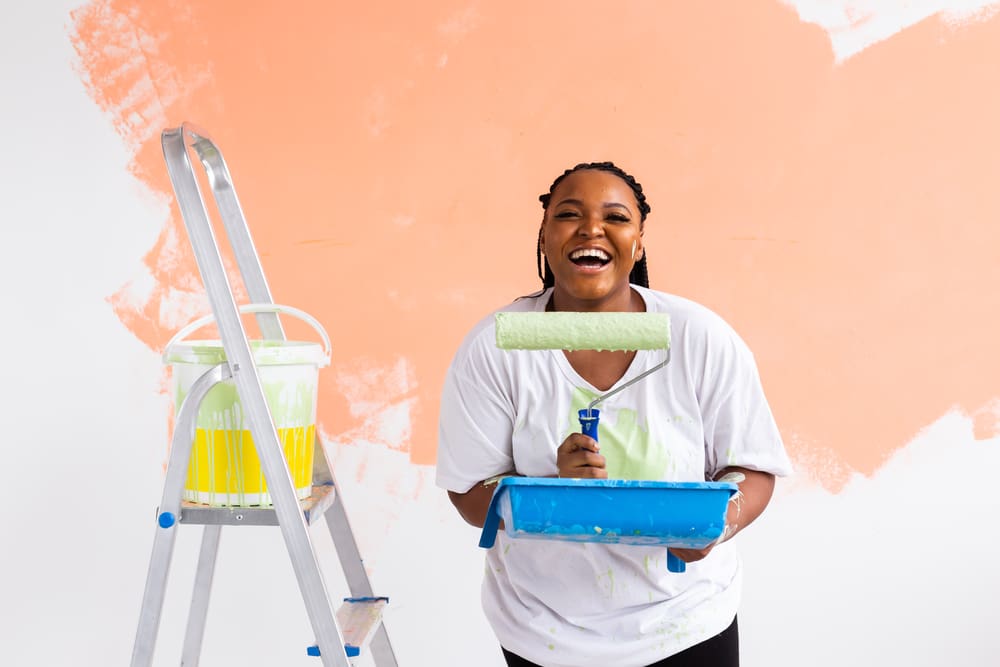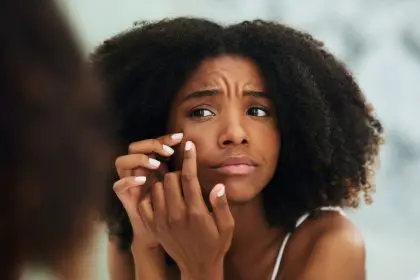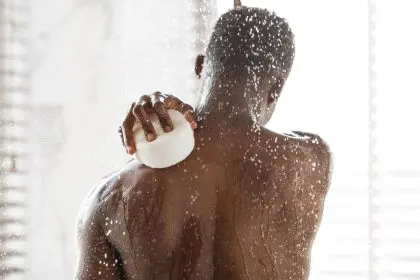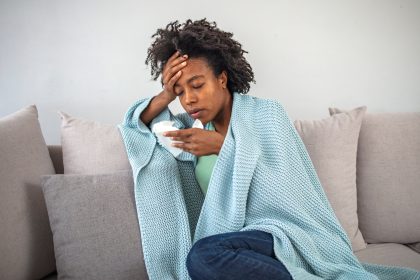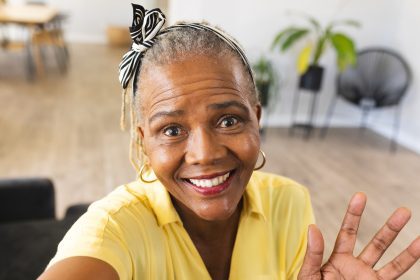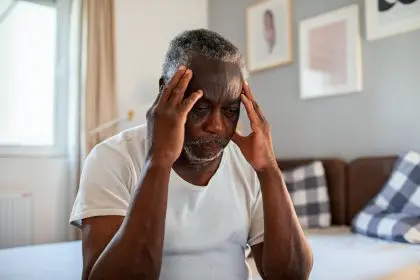You walk into a room painted in soft blue tones and immediately feel your shoulders relax. Later, you step into a vibrant yellow kitchen and notice your energy levels spike. These aren’t coincidences or your imagination playing tricks – your brain is responding to a powerful but often overlooked force in your daily environment. The colors surrounding you in your home are constantly influencing your emotions, stress levels, and overall mental state in ways you might never have considered.
Color psychology isn’t just an abstract concept studied in laboratories – it’s a living, breathing influence that shapes your emotional landscape every moment you spend at home. Understanding how different hues affect your mind could be the key to creating spaces that support your mental health and enhance your daily well-being.
The brain-color connection that happens instantly
Your brain processes color information faster than almost any other visual detail. Within milliseconds of entering a room, specialized cells in your retina have transmitted color data to your brain’s limbic system – the emotional control center that influences everything from your mood to your stress response.
This rapid processing means colors begin affecting your emotions before you’re even consciously aware of them. The wavelengths of light reflecting off your walls, furniture, and decor trigger immediate neurochemical responses that can elevate or dampen your mood, increase or decrease your energy levels, and even influence your ability to concentrate or relax.
Different colors stimulate the production of various neurotransmitters and hormones. Warm colors like red and orange can trigger the release of adrenaline and dopamine, creating feelings of excitement and energy. Cool colors like blue and green promote the production of serotonin and activate your parasympathetic nervous system, encouraging relaxation and calm.
This isn’t just subjective preference – brain imaging shows measurable differences in neural activity when people are exposed to different color environments. Your amygdala, hippocampus, and prefrontal cortex all respond distinctly to various hues, creating cascades of emotional and physiological changes that ripple through your entire system.
Red rooms and the arousal response
Red might be the most emotionally provocative color you can introduce into your living space. This powerful hue triggers your sympathetic nervous system, the part responsible for your fight-or-flight response, creating immediate increases in heart rate, blood pressure, and breathing rate.
In your home, red can serve as an emotional amplifier, intensifying whatever feelings you bring into the space. If you’re already energized and confident, red environments can boost these positive states. However, if you’re stressed or anxious, red rooms can escalate these negative emotions, making relaxation nearly impossible.
The psychological effects of red extend beyond just arousal. This color has been shown to enhance feelings of passion and romance, which explains why it’s often chosen for dining rooms where intimate conversations happen. Red also stimulates appetite, making it popular in kitchens, though this same effect can be problematic for those trying to manage their eating habits.
Interestingly, red affects time perception, making minutes feel longer than they actually are. This temporal distortion can make red rooms feel more intense and emotionally charged, as experiences seem to unfold in slow motion, amplifying their emotional impact.
Blue sanctuaries that calm your nervous system
Blue consistently ranks as one of the most psychologically soothing colors, and for good reason. This cool hue triggers the release of calming neurotransmitters while simultaneously lowering cortisol levels, creating an environment that naturally reduces stress and promotes tranquility.
In blue environments, your brain waves tend to shift toward alpha patterns associated with relaxation and creativity. Your breathing automatically becomes deeper and more rhythmic, while muscle tension decreases throughout your body. These physiological changes create the perfect conditions for rest, reflection, and restoration.
Different shades of blue produce varying emotional effects. Light, powder blues create feelings of spaciousness and peace, making them ideal for bedrooms where quality sleep is the goal. Deeper navy blues can evoke feelings of stability and security, providing emotional grounding in uncertain times.
Blue also affects cognitive performance, particularly tasks requiring focus and mental clarity. However, too much blue can sometimes lead to feelings of coldness or melancholy, especially in rooms without adequate natural light or warm accents to provide emotional balance.
Green spaces that restore mental energy
Green holds a unique position in color psychology as the most emotionally balanced hue. Positioned in the center of the visible light spectrum, green doesn’t overstimulate like warm colors or under-stimulate like cool ones – instead, it creates a sense of equilibrium that many find deeply restorative.
This balance makes green particularly effective at reducing mental fatigue and eye strain. Spending time in green environments can actually restore your cognitive resources after periods of intense concentration or stress. This restorative effect explains why even looking at green plants or nature scenes through windows can improve mood and mental performance.
Green environments promote feelings of growth, renewal, and hope. The color triggers associations with nature and new beginnings, which can be psychologically uplifting during challenging periods. Many people report feeling more optimistic and energized after spending time in green spaces.
The shade of green significantly influences its emotional impact. Sage and olive greens create sophisticated, calming atmospheres perfect for studies or meditation spaces. Brighter, more vibrant greens can energize and invigorate, making them excellent choices for exercise rooms or creative spaces where inspiration is desired.
Yellow kitchens and the happiness hormone
Yellow stimulates the production of serotonin, often called the happiness neurotransmitter, more than any other color. This sunny hue can literally brighten your mood, creating feelings of joy, optimism, and mental clarity that persist even after you leave the yellow environment.
In homes, yellow works particularly well in spaces where you want to encourage social interaction and positive energy. Kitchens painted in warm yellow tones often become the heart of the home, drawing family members together and promoting cheerful conversations over meals.
Yellow also enhances mental agility and creative thinking. The color stimulates the left side of your brain, which handles logical reasoning and analytical tasks, while simultaneously encouraging the playful, imaginative right brain. This dual activation makes yellow environments ideal for activities requiring both creativity and focused thinking.
However, yellow requires careful application because too much can become overwhelming. Bright, intense yellows can trigger anxiety and irritability, especially in people who are already stressed. Softer, more muted yellow tones provide the mood-boosting benefits without the potential for overstimulation.
Purple paradox of luxury and introspection
Purple occupies a fascinating position in emotional color psychology, combining the calming properties of blue with the energizing qualities of red. This unique combination creates complex emotional responses that can range from feelings of luxury and creativity to deep introspection and spiritual connection.
Light purples like lavender promote relaxation and stress relief, making them popular choices for bedrooms and bathroom spaces designed for unwinding. These softer shades can help quiet mental chatter and encourage the kind of peaceful mindset that supports quality sleep and meditation.
Deeper purples evoke feelings of sophistication, creativity, and mystery. These rich hues can stimulate imagination and artistic expression, which is why they’re often chosen for creative spaces like art studios or reading nooks. However, dark purples can also feel heavy or oppressive if used extensively without lighter accent colors.
Purple’s association with royalty and luxury can create feelings of self-worth and confidence when used thoughtfully in personal spaces. However, this same association can sometimes feel pretentious or overwhelming in everyday family areas where comfort and approachability are more important than dramatic impact.
Neutral territory and emotional grounding
While bold colors grab attention, neutral tones play a crucial role in emotional regulation within your home. Beiges, grays, and off-whites provide psychological breathing room, allowing your nervous system to process and integrate the emotional stimulation from more vibrant colors elsewhere in your space.
Neutral environments promote feelings of stability and calm without completely suppressing emotional responses. These colors create backgrounds that let other elements – artwork, furniture, natural light – take center stage while maintaining an overall sense of balance and tranquility.
Different neutral tones produce distinct emotional effects. Warm neutrals with undertones of beige or cream create cozy, welcoming atmospheres that encourage relaxation and social connection. Cool neutrals with gray or blue undertones feel more modern and sophisticated but can sometimes seem sterile without warm accents.
The key to using neutrals effectively lies in layering different textures and subtle color variations to prevent spaces from feeling bland or emotionally flat. Strategic use of neutral tones provides emotional anchoring that allows you to enjoy pops of color without feeling overwhelmed.
The seasonal color shift that matches your mood cycles
Many people intuitively adjust their home colors seasonally, and this instinct aligns perfectly with psychological research on mood and color preferences. Your emotional needs change throughout the year, and adapting your color environment can support your mental health during different seasons.
During darker winter months, incorporating warmer colors like soft oranges, deep reds, or golden yellows can help combat seasonal mood dips by providing the emotional warmth and energy that sunlight normally supplies. These colors literally help compensate for reduced natural light exposure.
Spring cleaning often includes introducing fresh greens and light blues that mirror the renewal happening in nature. These colors support feelings of optimism and new beginnings that align with the natural energy shift as days grow longer and warmer.
Summer may call for cooler colors that provide psychological relief from heat and brightness. Blues, greens, and crisp whites can create refreshing environments that feel emotionally cooling even when temperatures soar.
Room-by-room color strategies for emotional wellness
Different rooms in your home serve distinct functions, and choosing colors that support these purposes can significantly enhance your daily emotional experience. Each space offers opportunities to use color psychology strategically to improve specific aspects of your well-being.
Bedrooms benefit from colors that promote rest and relaxation. Soft blues, gentle greens, and muted purples create environments conducive to quality sleep and peaceful dreams. Avoiding overstimulating colors like bright red or orange in sleeping spaces helps maintain healthy circadian rhythms.
Living areas where families gather work best with colors that encourage social connection and comfort. Warm neutrals with pops of inviting colors like soft yellow or coral create welcoming atmospheres that bring people together without overstimulating conversation or causing restlessness.
Home offices and study spaces perform better with colors that enhance focus and mental clarity. Light blues and greens improve concentration while reducing eye strain, while touches of yellow can stimulate creative thinking without causing distraction.
The lighting factor that transforms color psychology
The emotional impact of any color depends heavily on the lighting conditions in your space. Natural daylight reveals colors’ true emotional properties, while artificial lighting can dramatically alter how colors affect your mood and mental state.
Warm artificial lighting enhances the comforting qualities of reds, oranges, and yellows while making cool colors feel more welcoming. Cool lighting brings out the refreshing properties of blues and greens but can make warm colors appear dull or muddy.
Understanding how lighting interacts with your chosen colors allows you to fine-tune the emotional atmosphere throughout the day. Dimmer switches become powerful tools for adjusting not just brightness but the psychological impact of your color choices.
The direction and quality of natural light also influence color psychology. North-facing rooms that receive cool, indirect light may benefit from warmer color choices to maintain emotional warmth, while south-facing spaces with abundant warm light can handle cooler colors without feeling cold or unwelcoming.
Personal color preferences and emotional conditioning
While color psychology reveals general patterns in how hues affect emotions, your personal history and cultural background also shape your responses to different colors. Colors associated with positive memories and experiences will likely have uplifting effects regardless of their general psychological properties.
This personal conditioning means the most emotionally supportive home environment combines evidence-based color psychology with your individual preferences and associations. A color that generally promotes calm might not work for you if it triggers negative memories or simply doesn’t resonate with your aesthetic sensibilities.
Pay attention to your emotional responses in different colored environments over time. Notice which colors consistently make you feel energized, relaxed, creative, or comfortable. This self-awareness allows you to create a personalized color palette that works with both general psychological principles and your unique emotional landscape.
The goal isn’t to follow color psychology rules rigidly but to use this knowledge as a starting point for creating spaces that genuinely support your emotional well-being. Your home should reflect not just what colors are “supposed” to do but what they actually do for your specific mental and emotional needs.
Understanding how colors influence your emotions empowers you to create living spaces that actively support your mental health and daily well-being. Every wall color, throw pillow, and decorative accent becomes an opportunity to nurture your emotional state and enhance your quality of life through the simple but powerful psychology of color.

